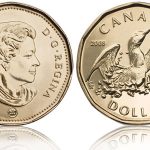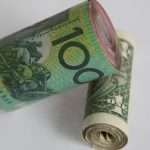Yesterday’s trade saw GBP/USD within the range of 1.5618-1.5737. The pair closed at 1.5641, losing 0.15% on a daily basis.
At 8:35 GMT today GBP/USD was up 0.09% for the day to trade at 1.5654. The pair touched a daily high at 1.5666.
Fundamentals
United Kingdom
Consumer inflation
The cost of living in the United Kingdom probably increased, with the CPI being at 1.3% in October from a year ago, according to the median estimate by experts. If so, this would be the tenth consecutive month, when inflation rate remained below the 2-percent inflation objective, set by Bank of England. In September the annualized consumer inflation was reported at 1.2%, down from 1.5% in August. Septembers rate of inflation has been the lowest in five years, due to a decline in prices of food and motor fuels. Food prices dropped at an annualized rate of 1.5% in September, while prices of motor fuels plunged 6.0%. The largest downward contributions to the change in the CPI 12-month rate between August and September came from transport costs, which fell 2.4%, mostly due to sea fares and air fares, according to the report by the Office for National Statistics. Cost of recreation and culture was 0.1% lower, due to prices of technological goods such as laptop and tablet computers, computer accessories, games consoles and computer games.
The CPI is the main measure of inflation in the UK for macroeconomic purposes and forms the basis of the inflation target set by the government. Every month about 120 000 samples are made, examining the change in prices of about 650 products. They represent the “market basket” of goods and services, on which the index is based.
Key categories in the consumer price index are Transport (accounting for 16.2% of the total weight) and Housing, Water, Electricity, Gas and Other fuels with a 14.4% share. Recreation and Culture accounts for 13.4%, Restaurants and Hotels – 11.4% and Food and Non-alcoholic Beverages – 11.2%. The CPI also encompasses Miscellaneous Goods and Services (9.6%), Clothing and Footwear (6.5%), Furniture, Household Equipment and Maintenance (6.1%). Alcoholic Beverages and Tobacco, Health, Communication and Education comprise the remaining 11.2% of the total weight.
The core consumer price inflation probably accelerated to 1.6% in October compared to the same month a year ago, from 1.5% in September. The latter has been the lowest core inflation since April 2009. The core CPI measures the change in prices of goods and services purchased by consumers, without taking into account volatile components such as food, energy products, alcohol and tobacco.
Higher-than-expected annualized CPI, thus, approaching the inflation objective of 2.0%, would certainly boost demand for the sterling. The Office for National Statistics (ONS) will publish the official CPI report at 9:30 GMT.
BoE rates
Analysts suggest the Bank of England will probably maintain its benchmark interest rate at the current record low level until after the general election in May. 92% of respondents in a survey, conducted by Bloomberg, project a rate hike after the vote. A month ago this percentage was 44%. 8% of respondents forecast that the bank will take action before the election.
“On the basis of the latest BOE forecasts, the position of the two MPC dissenters looks untenable,” said Peter Dixon, an economist at Commerzbank AG in London, cited by the same media. “A rate hike before the summer is unlikely.”
United States
Producer prices
United States’ annualized producer price inflation probably slowed down to 1.3% in October, according to the median estimate by experts, from 1.6% in September. If so, this would be the lowest producer inflation since February, when the corresponding index (PPI) climbed at an annualized pace of 0.9%. This index reflects the change in prices of over 8 000 products, sold by manufacturers during the respective period. The Producer Price Index (PPI) differs from the Consumer Price Index (CPI), which measures the change in prices from consumer’s perspective, due to subsidies, taxes and distribution costs of different types of manufacturers in the country. The simple logic behind this indicator is that if producers are forced to pay more for goods and services, they are more likely to pass these higher costs to the end consumer. Therefore, the PPI is considered as a leading indicator of consumer inflation. Lower-than-expected producer prices would usually have a bearish effect on the greenback.
Nation’s annualized core producer price inflation, which excludes prices of volatile categories such as food and energy, probably decelerated to 1.5% in October from 1.6% in the prior month. If so, this would be the lowest annual rate since March, when core producer inflation was registered at 1.4%. This indicator is quite sensitive to changes in aggregate demand, thus, it can be used as a leading indicator for economy. However, because of its restrained scope, it is not suitable for future inflation forecasts. The Bureau of Labor Statistics is expected to report the official PPI performance at 13:30 GMT.
NAHB Housing Market Index
The National Association of Home Builders (NAHB) Housing Market Index probably rose to a reading of 55.0 in November from 54.0 in October. It is based on a monthly survey in regard to current home sales and expected sales in the coming six months. Values above the key level of 50.0 indicate that housing market conditions are good. Therefore, higher than projected readings would provide support to the US dollar. The official data is scheduled for release at 15:00 GMT.
Pivot Points
According to Binary Tribune’s daily analysis, the central pivot point for the pair is at 1.5672. In case GBP/USD manages to breach the first resistance level at 1.5706, it will probably continue up to test 1.5771. In case the second key resistance is broken, the pair will probably attempt to advance to 1.5805.
If GBP/USD manages to breach the first key support at 1.5607, it will probably continue to slide and test 1.5573. With this second key support broken, the movement to the downside will probably continue to 1.5508.
The mid-Pivot levels for today are as follows: M1 – 1.5541, M2 – 1.5590, M3 – 1.5640, M4 – 1.5689, M5 – 1.5739, M6 – 1.5788.
In weekly terms, the central pivot point is at 1.5735. The three key resistance levels are as follows: R1 – 1.5879, R2 – 1.6087, R3 – 1.6231. The three key support levels are: S1 – 1.5527, S2 – 1.5383, S3 – 1.5175.





